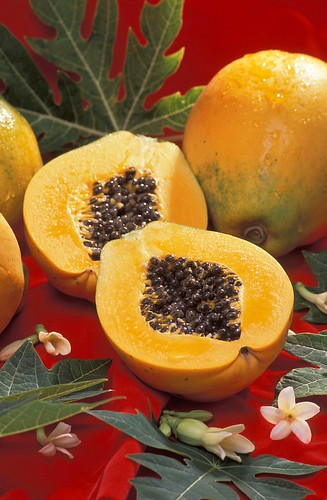
Think algae is just slimy green pond scum? Well, think again!
Thanks to advances in science and technology, these microscopic plant-like organisms are now star players in biologically-based approaches to producing fuel for transportation and other energy needs.
In Hilo, Hawaii, Agricultural Research Service (ARS) Plant Pathologist Lisa Keith is leading an effort to produce biodiesel using a type of green algae known as Auxenochlorella protothecoides (formerly Chlorella protothecoides).
Oh, and she’s also using the pulp of discarded papayas, namely, those deemed too blemished, malformed, or damaged to be sold for market.
So how, you may ask, does one go from green algae to papaya to biofuel?
That’s where the science and technology part comes in—along with support from the state government of Hawaii, which hopes to ease the state’s reliance on imports of petroleum-based oil.
The system devised by Keith and her colleagues calls for growing the algae in giant vats, called “bioreactors.” There, hidden from sunlight, the algae are fed what might be likened to a papaya smoothie.
“While nearly all algae are capable of using energy from light to produce organic molecules from carbon dioxide and water, some algae, including Auxenochlorella protothecoides, can also absorb organic molecules such as sugars from sources such as papaya juice,” explains Keith. She is with ARS’s Daniel K. Inouye U.S. Pacific Basin Agricultural Research Center in Hilo.
In the process, these industrious algae end up storing 60 percent of their cellular weight in lipids. These lipids (or oils), in turn, provide material for making biodiesel.
The algae are like the gift that keeps on giving.
Keith’s team thinks their remains from the oil-extraction process, called “algal meal,” can offer Hawaiian farmers a low-cost source of feed for fish or livestock, cutting importation costs. The algae’s fondness for papaya also could offer a way for growers to recoup some of the losses on about one-third of Hawaii’s $11-million papaya crop discarded because of defects.
It’s all part of what Keith and colleagues call a “zero-waste” system.
“The goal is to make agriculture more profitable and to address food- and energy-security issues in Hawaii,” she says.



